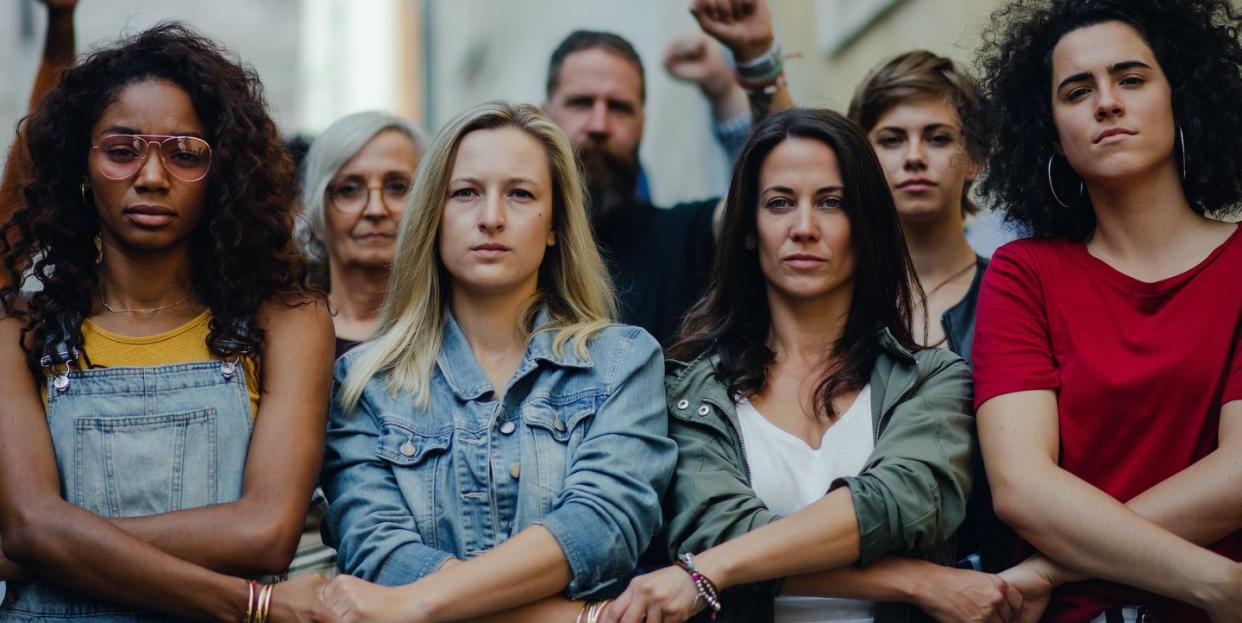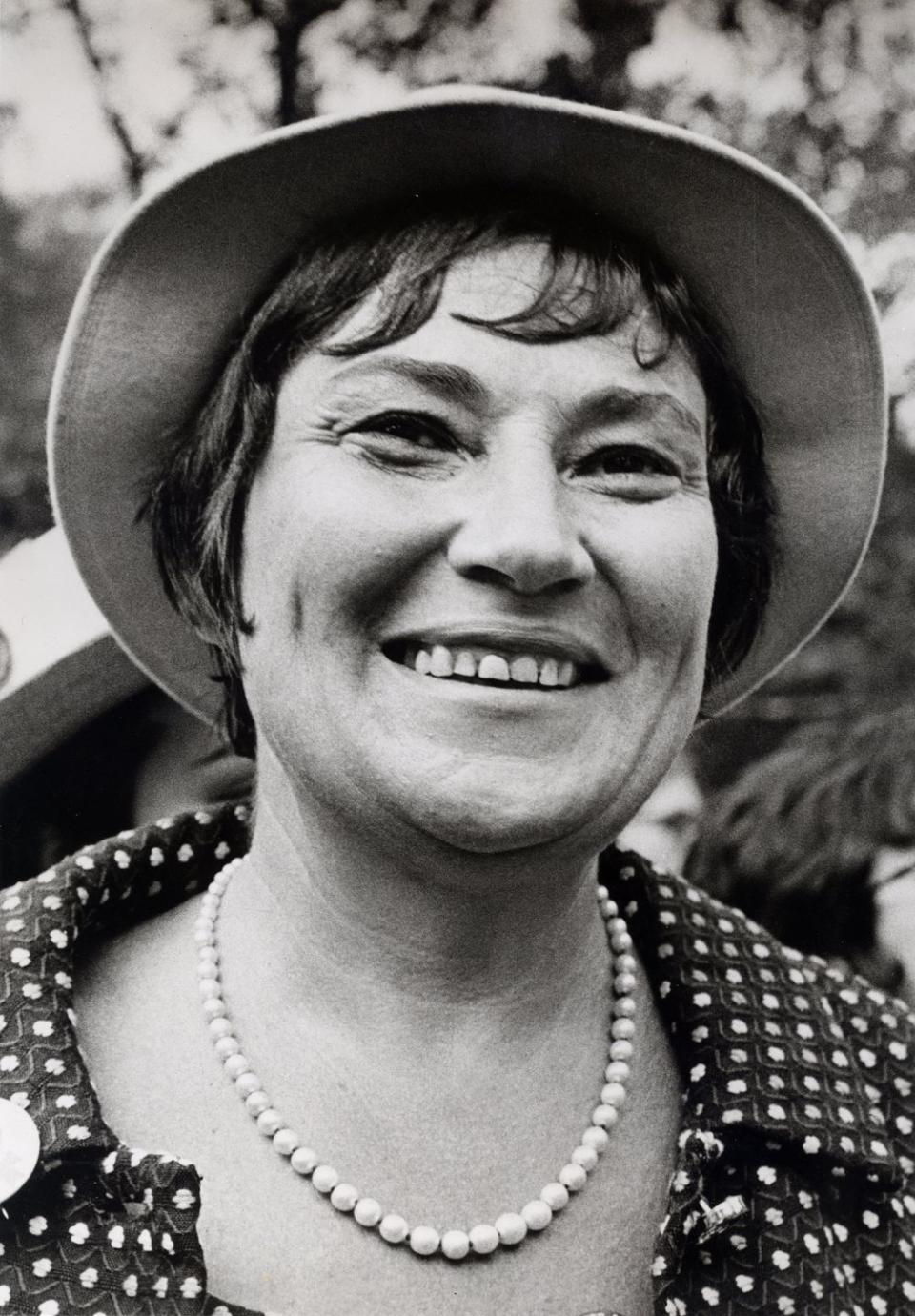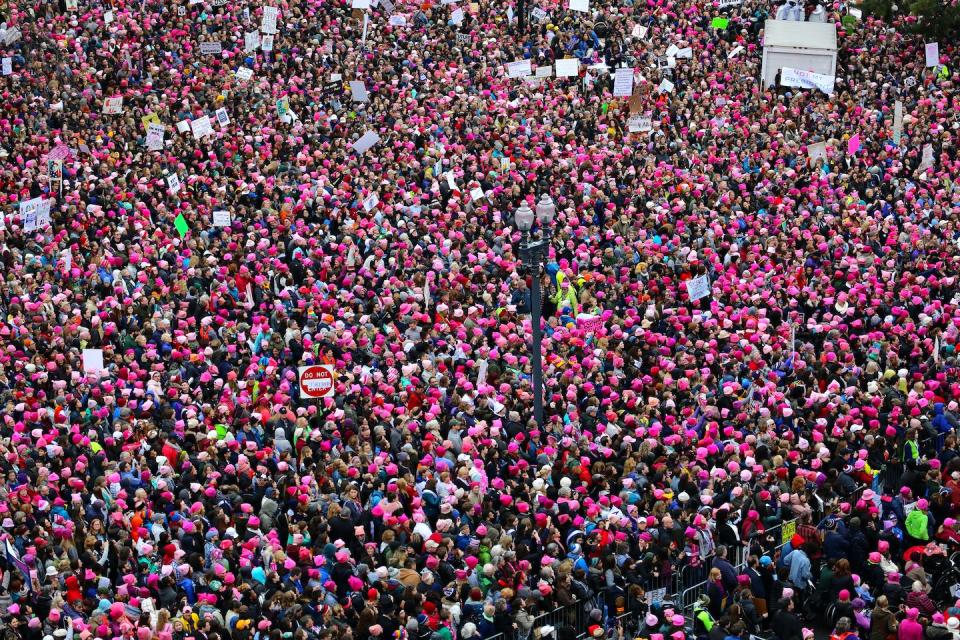A Wake-Up Call on Women’s Equality Day

- Oops!Something went wrong.Please try again later.
"Hearst Magazines and Yahoo may earn commission or revenue on some items through the links below."
In 1972, Bella Abzug, the indomitable congresswoman from New York, got a resolution passed establishing August 26 as “Women’s Equality Day.” The day memorialized the date in 1920 when the 19th Amendment was finalized, granting women the constitutional right to vote. Representative Abzug’s resolution read in part, “WHEREAS, the women of the United States have designated August 26, the anniversary date of the certification of the Nineteenth Amendment, as symbol of the continued fight for equal rights…” Observance of Women’s Equality Day was meant not only to commemorate women’s right to vote but also to call attention to the ongoing struggle for gender equality.

Now it’s 2022.
Where are we in this fight, nearly 50 years after the very first Women’s Equality Day?
Women have made strides in all sectors, including government, academia, sports, business, and medicine. In 1973, women made only 57 cents per dollar earned by men, and today women earn 82 cents per dollar when comparing all women to all men (of course, women of color still fare far worse). In 1972, there were only 15 women in Congress—total. Currently there are 147 women in the 117th Congress, 40 Republicans and 107 Democrats. The 147 women represent the most women serving in Congress—ever. Today we also have a female vice president, an achievement many once thought unthinkable. A whopping 58 percent of bachelor’s degrees conferred by U.S. postsecondary institutions are now awarded to women. And we have a woman Speaker of the House!
However, as Congresswoman Carolyn Maloney said in her 2008 book, Rumors of Our Progress Have Been Greatly Exaggerated, despite what many incorrectly assume, gender parity has not yet been realized. Far from it. Today:
Only 27 percent of elected officials in Congress are women, and that’s an all-time high. (Reminder: Women make up 51 percent of the U.S. population.)
Women in state legislatures do not fare much better. They make up only 31.1 percent of all state legislators.
Roe v. Wade has been demolished, overturning 50 years of nationwide legal abortion access. Let’s also remember that the fall of Roe will impact more than abortion rights.
In addition to not being free to chose whether or not to give birth, one in five moms experiences pregnancy discrimination in the workplace today.
The U.S. is one of the only countries in the world without any national guaranteed paid parental leave.
The gender wage gap persists across all demographics, and is not predicted to close in the U.S. until at least 2059. In four states—Louisiana, North Dakota, Utah, and Wyoming—the wage gap will not close until after the end of the 21st century.
Many sex-discriminatory laws remain on the books and in practice. For example, in many states, the age for marriage is different depending on your sex. In every instance, girl children are allowed to marry much younger than boys. (Yes, child marriage is still legal in almost every state in the U.S.).
Nationwide, 81 percent of women report experiencing some form of sexual harassment and/or assault in their lifetimes.
Sixty-one percent of women say online harassment is a major problem, keeping the modern public square unsafe for women.
The Equal Rights Amendment is not yet law, despite many decades of trying.
And...we still haven’t elected a woman president.
No matter how you measure it, women in this country are still very much not equal.
There have been many moments in feminist history where we have come together en masse to flex our collective power and fight for equality. Some identify these as the “waves” of feminism. In the first wave, women fought for the right to vote. In the second, women fought for bodily autonomy, winning the now-defunct Roe v. Wade case and legislative victories like the Equal Pay Act of 1963. The powerful second wave, which was supported by women in both political parties, forced Congress to approve $5 million in public appropriations for both state and national women’s rights conferences. Congresswoman Patsy Mink, the first-ever woman of color elected to Congress, sponsored the bill, and Republican president Gerald Ford signed it into law. Five million dollars in 1975 is equivalent to about $27 million in 2022—can you imagine a Republican president funding a $27 million national feminist convention today?
The conventions all across the country (that Congress paid for) culminated in the National Women’s Conference in Houston in 1977. There, Bella Abzug, Gloria Steinem, Betty Friedan, and other prominent feminists endorsed hot-button issues like abortion, LGBTQ+ rights, and the still-unratified Equal Rights Amendment (ERA), which had passed in Congress with enthusiastic support from both sides of the aisle. The gathering was the most diverse of any political gathering in American history in terms of race, ethnicity, class, age, occupation, and level of political experience. During the conference, women from many marginalized racial groups came together to form the Minority Caucus, led by Coretta Scott King. They first coined the term “women of color” in Houston that day.
At the exact same time, anti-ERA campaigner Phyllis Schlafly and anti-abortion crusader Lottie Beth Hobbs rallied across town with conservative women to protest the federally funded feminist conference and launch what they called the “pro-family” movement. Their rally was almost entirely white, and included large numbers of men. This marked the death knell of the Republican Party’s longtime support for women’s rights.
Anti-feminism, racism, and Christian nationalism, became the three prongs of the Republian Party’s Long Southern Strategy to court white voters. The first major victory of the anti-feminist prong was the defeat of the ERA in 1982, after which feminists scrambled for a new platform. What had been a nationwide, robust, powerful, cohesive movement…scattered. Some shifted their focus to electing women to office. Others started movements to combat workplace harassment and violence against women. What had been active, vibrant coalitions began to drift into professionalizing camps with less incentive to actually solve problems than to fundraise by catastrophizing current events. Progress was made in certain lanes, but the backlash against women’s rights was fierce; victories feminists thought they had irrevocably secured were being rolled back.
Today—due to this scattershot strategy, combined with the failure of previous generations to train younger women in feminist organizing—there is no clear leadership of the feminist movement as a whole. There are smaller groups fighting for change by region or issue (some very effectively), but no nationwide, cohesive, disciplined feminist movement with a list of coherent demands. Once-powerful national groups from the 1970s, like the National Organization for Women or the Feminist Majority, are not on any politician’s radar today.
The Women’s March on Washington in 2017 was trumpeted as the largest single-day demonstration in recorded U.S. history, but it had no discernible demands. This is, in part, because none of the leaders of the Women’s March were part of the existing feminist movement. The movement wasn’t ready to meet the moment, and so those new to the space filled the void. Since 2017, its leadership has struggled to build momentum behind any concrete platform. It continues to hold marches and events that have smaller and smaller turnouts, and even clash with other movements—including those deeply embedded in the abortion rights movement. The momentum and energy gathered in 2017 has largely dissipated, funneling into other disparate causes as it did after the second wave. It certainly never blossomed into a unified movement with any bargaining power in Congress, as illustrated by its latest convention, which was also held in Houston but didn’t receive a single dime in federal appropriations (let alone $27 million).

In recent years, there have been vibrant, effective online pushes that have changed the national conversation—for example, #MeToo and #ShoutYourAbortion. However, internet enthusiasm is difficult to translate into boots on the ground and votes in the ballot box. While #MeToo may strike fear into the hearts of individual harassers (and has taken down very powerful men), it has not resulted in policy changes that can protect women who are not well-connected and don’t have ample internet access. Abortion has begun to be successfully destigmatized in the culture at large, but currently 26 states are poised to ban it altogether, and the future of abortion access is incredibly bleak.
None of this goes to say that feminism (or the basic tenets of feminism, at least) is not popular. Feminism is currently in fashion in art and music, and with many celebrities. Intersectional feminism has broadened the scope of the feminist project in important ways. We have, of course, made progress. But equality is not a feeling. It has to be formalized. The modern conundrum feminism faces is convincing women that, in reality, they don’t have legal rights they think they already do. Things are dire for feminism as a political force. In fact, a recent poll by the Southern Poverty Law Center showed that—today—nearly half of Democratic men under 50 think feminism has “done more harm than good.”
Sobering statistics like this remind us of how much work is left to be done to achieve gender equality in this country. Real progress will require old-fashioned community building, organizing a substantial ground game in low women’s rights infrastructure states, and a significant investment in the next generation of feminist leaders. If we have anything to learn from the Phyllis Schlaflys of the past, it’s that even catastrophic losses provide an opportunity to go back to the drawing board and fight harder for what we want. We can take this moment in history, when equality seems to be quickly disappearing, to create a bold vision of what we want not just in the next year but in the next 10, 20, 30, 40, or even 50 years.
American women can organize to promote our interests. It is possible. We intuitively know that concerted efforts to eliminate our freedoms is offensive to our core dignity as human beings. Encouragingly, after the Dobbs decision, women have been registering to vote in record numbers. That energy must be channeled into a unified movement with concrete demands. We must invest in feminism as an ongoing political project to improve the lived experience of all—especially those most marginalized, like trans women, women of color, immigrant women, disabled women, older women, and queer women—and not just with quippy slogans. As Representative Shirley Chisholm, the first Black woman ever elected to Congress said during her presidential campaign in 1972, “Women have learned to flex their political muscles. You got to flex that muscle to get what you want.”
Kate Kelly is an attorney and the author of Ordinary Equality: The Fearless Women and Queer People Who Shaped the U.S. Constitution and the Equal Rights Amendment.
You Might Also Like

